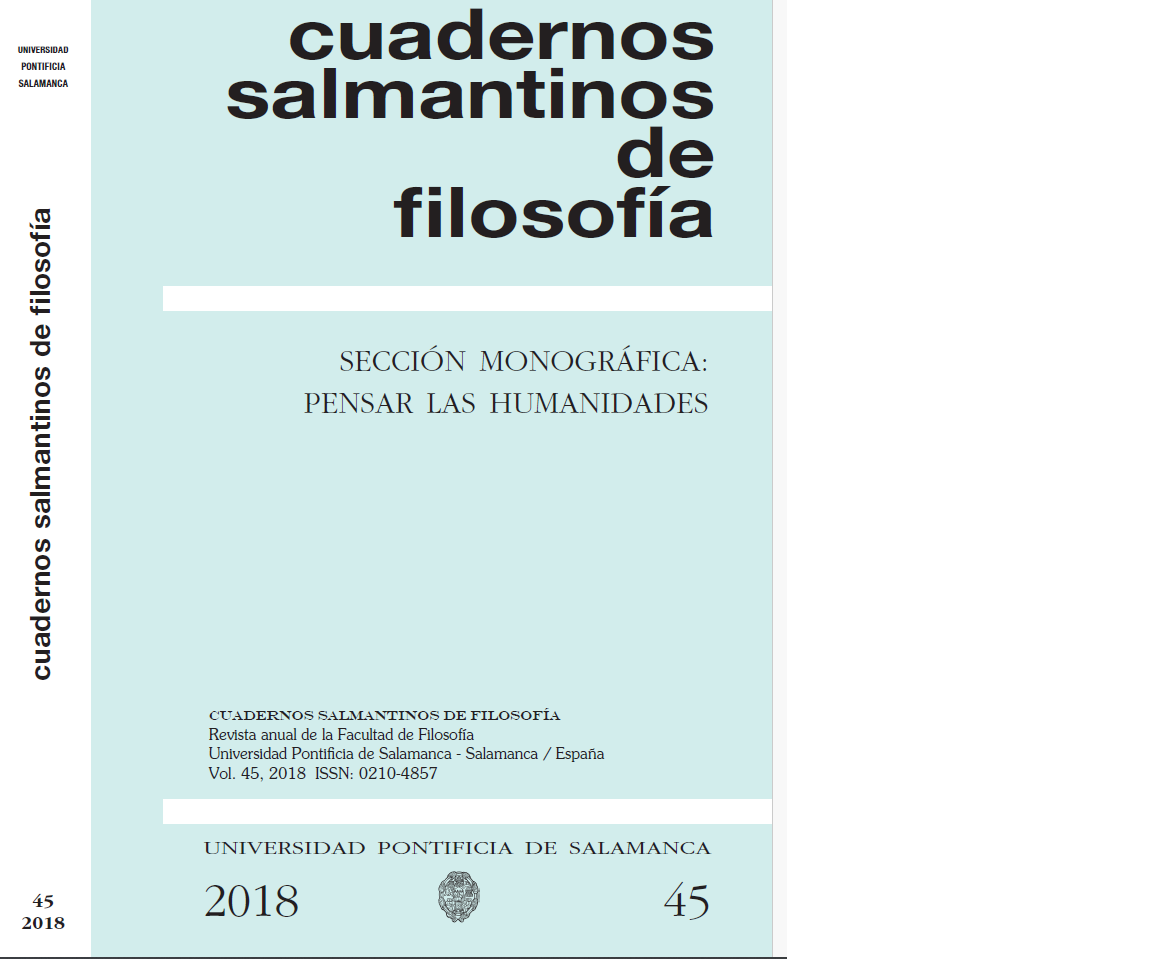Las humanidades en J. A. Comenio y E. Cassirer. Imagen y símbolo en la unidad de los fundamentos y los procesos formativos del ser humano
Contenido principal del artículo
En este trabajo se establece que el objetivo de las Humanidades es la formación universal del ser humano acorde a su propia singularidad. Sin embargo, de la tensión entre el objetivo (universal) y la realidad (singular) surge el dilema de cómo se alcanza dicha finalidad. A partir del concepto de “imagen” y “símbolo” en la pedagogía de Comenio y en la filosofía de Cassirer, argumentaré –siguiendo al pedagogo– que la relación entre el singular y el universal es posible a través de una metodología didáctica, que asume la «imagen» como «símbolos» para promover los principios universales en todos los seres humanos. A través del neokantiano sostendré que el concepto de «imagen» es la forma de coordinar la concepción del sujeto con los principios universales, por medio de «formas simbólicas» específicas. A lo largo del trabajo haré notar que con ambas teorías se puede pensar la labor general de las humanidades.
Detalles del artículo
Citas
AYALA, Raquel, “La relación pedagógica: en las fuentes de la experiencia con van Mannen”. Revista Complutense de Educación, 29 (1), 2018, 30.
BAYER, Thora, “Cassirer Normative Philosophy”. The journal of Value of Inquiry, Vol. 27, 1993, 431-441.
CASSIRER, Ernst, “The Concept of Philosophy as philosophical problem”. En: Symbol, Myth and Culture. Essays and lectures of Ernst Cassirer (1935-1945). (Edited by
D. P. Verene). New Haven and London: Yale University Press, 1979, 49-91.
—, An essay on man. An introduction to a Philosophy of Human Culture. New York: Doubleday Anchor, 1945.
—, The Myth of the state, New Haven, Yale University Press, 1945.
—, Substance and function & Einstein´s theory of relativity. (Translated by W. Curtis & M. Collings). Chicago, Dover Publication, 1953.
—, The philosophy of Symbolic Forms: the metaphysics of Symbolic Forms. New Haven & London: Yale University, 1996.
—, Filosofía de las formas simbólicas: El lenguaje. México: Fondo de Cultura Económica, 1998a.
—, Filosofía de las formas simbólicas. Fenomenología del conocimiento. México: Fondo de Cultura Económica, 1998b.
—, Las ciencias de la cultura (Traducción de W. Roces). México: Fondo de Cultura Económica, 2005, 125.
COMENIO, J. Amos, Didáctica Magna. (Traducción de Saturnino López. 18° Edición). México: Porrúa, 2002.
—, Orbis Sensualium Pictus. English edition by Charles Hoole. London: Leacroft, 1777.
—, Pampedia, Edición Castellana de F. Gómez. Madrid: Universidad Nacional de Educación a Distancia, 1992.
G. AMILBURU, María. «Ernst Cassirer». En: Fernández, Francisco & Mercado, Juan (Eds.), Philosophica: Enciclopedia Filosófica online. Consultada el 15 de julio de
http://www.philosophica.info/voces/cassirer/Cassirer.html
—, “La cultura como universo simbólico en la antropología de E. Cassirer”, Revista Pensamiento, 209, 1998, 221-244.
HABERMAS, Jürgen, “El concepto de dignidad humana y la utopía realista de los derechos humanos”. Diánoia, 60 (64), 2010, 3-25.
HERTZ, H., The principles of Mechanics presented in a new form. (Traducido al inglés por D. Jones & J. Walley). Londres: Macmillan and Co, 1899.
IBARRA, Andoni, MORMANN, Thomas, “Una teoría combinatoria de las representaciones científicas”. Revista Hispanoamericana de Filosofía, 32 (95), 2000, 39.
IKONEN, Sirku, “Cassirer’s critique of culture. Between the Scylla of Lebensphilosophie and the Charybdis of the Vienna Circle”. Synthese, 179, 2011, 187-202.
JUNCO, Ethel, CALABRESE, Claudio & GARCÍA, Francisco Los humanismos y la cultura de la paz. Zacatecas: Texere, 2017.
KLAUS, Andrés, “El pensamiento pedagógico y didáctico de Juan Amós Comenio: su papel en la pansofía triádica”, Pedagogía y saberes, 36, 2012, 95.
LLANO, Alejandro, Maravilla de maravillas: conocemos. EUNSA: Pamplona, 2016.
LUFT, Sebastian, “A Hermeneutic Phenomenology of subjective and objective Spirit: Husserl, Natorp and Cassirer”, The new yearbook of phenomenology and phenomenological Philosophy, Vol. 4, 2004, 209-248.
MARTÍ, Gabriel, “Sustancia individual de naturaleza racional: el principio personificador y la índole del alma separada”. Metafísica y persona,1, 2009, 113-129.
MOLLES, Abraham, La imagen. Comunicación funcional. (Traducción de Gastón Melo). México: Trillas, 1991.
READ, Herbert, Imagen e idea. (Traducción de Horacio Flores). México: Fondo de Cultura Económica, 1986.
RYCKMAN, T.A., “Conditio sine qua non? Zuordnung in the early epistemologies of Cassirer and Schlick”, Synthese, 88, 1991, 57-95.

